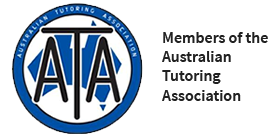Is your child having trouble skip counting, estimating or telling the time?
They may have trouble with number sense. Number sense is the skill that allows kids to understand and work with numbers to complete maths problems.
Maths skills in primary school focus on the ability to understand numbers and work with them in fluid and flexible ways. Number sense is a key skill which Learning Works helps primary school students develop in maths which allows your child to determine things like how things rank in order and how things compare in size. This is the ability to understand how much a number is “worth,” and using numbers as a way to solve problems.
- Number sense is the mind’s ability to form mental images of patterns and associate them with a number
- Kids with maths issues, such as dyscalculia – often have weaknesses in these skills and require plenty of repetition to grasp the concepts
- Number sense is a skill that can be developed and honed over time – Learning Works emphasises repetition to improve skills in primary maths
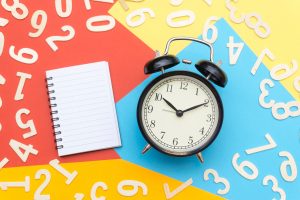
These include the ability to:
- Understand quantities
- Grasp concepts like more than, and less than, larger and smaller.
- Understand that symbols represent quantities (e.g. 8 is equivalent to 8)
- Make number comparisons – 22 is greater than 20, and 6 is half of 12)
- Understand the order of numbers in a list 7th, 8th, 9th
- An awareness of number patterns including recognising missing numbers
- Strong number sense skills come before learning maths operations – such as adding, subtracting, multiplying and dividing.
- Maths operations aren’t the only area impacted by number sense difficulties. Your child may have difficulty with other concepts that use numbers to symbolise amounts, like measurement, distance and time.
What teaching strategies promote number sense?
By the time children leave primary school, we would like them to have a well-developed understanding of number sense and place value. Children with problems in this area should focus on:
- Ordering – comparing numbers with each other
- Practice counting and grouping objects – adding to, subtracting and multiplying the groups to practice maths operations kills.
- Place value and position – understanding how the place of a digit affects its value
- Amount – knowing what the symbols in maths represent
- Get a lot of practice estimating: Building questions into everyday conversations, using phrases like “about how many,” or “about how much.”
- Match number symbols to quantities
- Work with manipulatives like blocks and rods to understand the relationship between different amounts
Multi-sensory techniques for teaching primary students maths
The use of sight, tough, hearing and movement can make it easier for your child to understand what numbers and symbols represent. Multi-sensory instruction activates several neural pathways in the brain, making later retrieval easier.
Here are some multi-sensory maths activities that may help your child develop number sense
1. Visualising with beads, lollies or cereal
Using objects or manipulatives they can touch and move around can make it easier for children to learn concepts in maths and other subjects. For example, kids might solve a division problem putting lollies into groups and seeing how many lollies are left over. These props can also be used for addition, subtraction and multiplication problems – helping your child to practise their maths operations skills.
By moving these things around and seeing how they can be manipulated and changed, kids have a concrete way of understanding how these operations work.

2. Drawing maths problems
Drawing a maths problem to visualise and interpret it is especially helpful for younger students as they begin to grasp multiplication, division and fraction problems. For example, a teacher may ask a child to solve the multiplication problem 3 x 8 by drawing 3 groups of 8 oranges. They’ll then be able to visualise how adding 3 groups with 8 things in each group, is equivalent to multiplying, helping to solidify this operation.
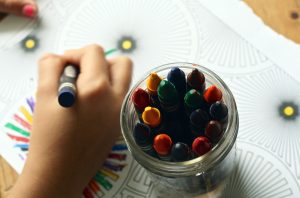
3. Building with place value blocks
A teacher give the number 125 and ask the child to build it using the blocks. The child would need to create one 100- block, two 10-blocks and 5 ones’ cubes. This helps children with understanding place value.
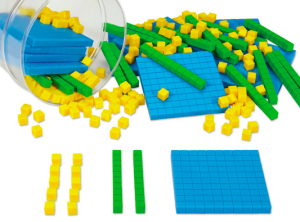
4. Building with coloured tubes or blocks
Using blocks is an excellent aid when teaching children number patterns and operations between numbers. For example, you may stack the coloured blocks in 2, 4, 6 and 8 and then ask the child to complete the next three stacks in the pattern (adding two each time). This helps the child make a connection between the items and the numbers they represent.
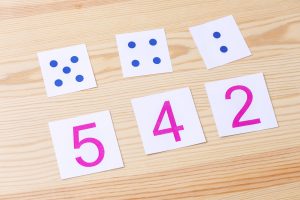
5. Using Pizza Slices
Cutting a paper pizza into slices is an excellent way for children to “see” fractions like a 1/8 or ¼ and visually understand how fractions can be equivalent. It also helps them see how a fraction is an equal share of something and reinforce number sense skills like more than and less than.

6. Creating a number line
Creating a number line and plotting numbers in place along the line is a visual strategy that helps teach concepts of counting and placing numbers in sequences. A number line app can also support solving problems using a number line.
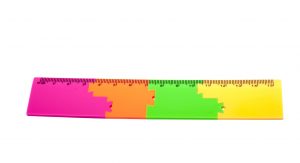
Key Takeaways
-
Number sense refers to the understanding of quantities as a concept
-
Multisensory learning and using physical objects is crucial for primary school children developing number sense skills
-
Number sense develops gradually over time by exploring numbers and visualising them
-
Strong number sense skills come before solving maths operations – such as adding, subtracting, multiplying and dividing
-
Number sense can be supported by giving primary school students opportunities to make sense of, and reason about, number.

